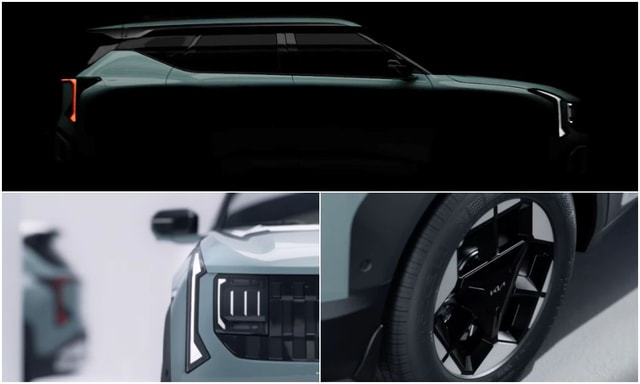What Happens When You Overfill Your Car With Oil?

When an engine's oil supply is depleted, bad things happen friction between moving parts increases, the engine may overheat, and, in the worst-case scenario, complex components cling to each other when grease runs out.
Bad things can happen when there is a lot of oil. Overfilling an oil with oil can cause foaming, which changes a potentially dangerous ointment into a frothy liquid with air bubbles, diminishing the ointment's lubricating and cooling properties. Foamy oil also promotes the oil siphon to circulate more vigorously throughout the engine. As a result, a few sophisticated components will receive less attention than they deserve, leading to increased wear and the likelihood of engine failure.

What is the recommended amount of oil for a vehicle?
That depends. Consult your owner's manual for specifics, but most engines require between 4 and 6 quarts. The oil drains typically into a skillet beneath the driving rod in the lowest part of the engine. The driving rod can act like a high-powered blender if the dish is packed, whipping the oil into a froth.
The engine speed is calculated on the drive rod, which rotates quickly when the engine is running. If the tachometer shows 2,500 rpm at 75 mph, for example, the driving rod is through a complete upheaval multiple times per second; floor the choke, and it can reach 5,000 rpm or higher.
Overfilling the engine also raises oil pressure, putting more significant strain on the seals and gaskets that prevent oil from leaking or moving in places it shouldn't. In addition, the increased pressure accelerates the wear of the seals and gaskets over time. Overfilling is prevalent in maintenance shops because new oil is sucked from mass holders rather than poured from quart- or gallon-size compartments. Holding the siphon trigger down for an extended period will significantly probably add additional oil, and the expert is unlikely to check the dipstick - and even if they do, oil takes time to deplete into the skillet, so they may receive a false reading of the oil level soon after siphoning in new oil.

The impacts of an excess of vehicle oil
Assuming your vehicle gets an excess of motor oil, your car can be impacted in scope of possibly harmful ways:
Tension on driving rod heads and tails: The head and tail couplers and closures on driving rods to stop oil spilling. On the off chance that an excessive amount of oil is put in the motor, additional strain can be placed on these parts, which can prompt breaks. Also, if this happens on the flywheel end of the shaft, oil can taint and harm the grip.
Grating on the driving rod - When canvassed in an excessive amount of oil, the driving rod and crane can encounter more prominent obstruction and rubbing, making them become harmed.
Engine wear: If oil is at an erroneous strain, the oil of motor parts won't be as expected to improve, causing expanded wear.
Engine harm: Too much ointment in the framework can increase tension on the driving rod. This can bring about oil entering the driving rod fumes pipe, going through into the burning chamber, impeding the pull hose with oil ash, and possibly prompting motor over-burden. Spilling over motor oil can likewise prompt twisted motor bars and fell valve pipes.
Flash attachment fouling - Excess oil can observe its direction into flash fittings, which should then be supplanted.
Assuming you experience any of the abovementioned, check your oil level utilizing a dipstick perusing. Warm the motor, leave it on a level surface, switch off the vehicle, then read the oil level using a dipstick. This should be between the base and most extreme markers on the stick.

The oil dipstick accurately reads the level when the automobile is on level ground, and the engine is cold. There should be no issues if the oil level is higher than the whole impression. However, if the oil is overfilled by a quart or more, or if foam forms on the dipstick, it's preferable to drain it and refill it to the right amount.
Trending News
 1 min readEU-Spec Citroen e-C3 EV Spied In India
1 min readEU-Spec Citroen e-C3 EV Spied In India
Latest News
 car&bike Team | Dec 10, 2025Aston Martin Launches Watch Collection With Timex, Prices Start At Rs. 17,995The collection brings Aston Martin’s iconic design language from road to wrist through two pillars along with automotive-inspired detailing.1 min read
car&bike Team | Dec 10, 2025Aston Martin Launches Watch Collection With Timex, Prices Start At Rs. 17,995The collection brings Aston Martin’s iconic design language from road to wrist through two pillars along with automotive-inspired detailing.1 min read car&bike Team | Dec 10, 2025Facelifted Tata Punch CNG Spied Testing Ahead Of DebutCompared to previous spyshots of the Punch facelift, the CNG vehicle here looks to have missed out on some kit.1 min read
car&bike Team | Dec 10, 2025Facelifted Tata Punch CNG Spied Testing Ahead Of DebutCompared to previous spyshots of the Punch facelift, the CNG vehicle here looks to have missed out on some kit.1 min read Seshan Vijayraghvan | Dec 10, 2025All-New Kia Seltos Unveiled: A Detailed Look In PicturesBookings for the new Kia Seltos will commence from December 11, while the price announcement will happen on January 2, 2026.2 mins read
Seshan Vijayraghvan | Dec 10, 2025All-New Kia Seltos Unveiled: A Detailed Look In PicturesBookings for the new Kia Seltos will commence from December 11, while the price announcement will happen on January 2, 2026.2 mins read Jaiveer Mehra | Dec 10, 20252026 Kia Seltos Makes Global Debut; India Launch On January 2, 2026Second-gen Seltos debuts Kia’s latest design language with design elements borrowed from the new Telluride SUV.4 mins read
Jaiveer Mehra | Dec 10, 20252026 Kia Seltos Makes Global Debut; India Launch On January 2, 2026Second-gen Seltos debuts Kia’s latest design language with design elements borrowed from the new Telluride SUV.4 mins read car&bike Team | Dec 10, 20252026 Kia Seltos World Premiere Highlights: Specifications, Features, Images1 min read
car&bike Team | Dec 10, 20252026 Kia Seltos World Premiere Highlights: Specifications, Features, Images1 min read car&bike Team | Dec 10, 20252026 Kia Seltos World Premiere In India Today: What To Expect From Gen 2 SUVOne of the most popular compact SUVs on sale in India is about to undergo a complete transformation as it enters its second generation in 2026. Here's all we know about the new Kia Seltos so far.3 mins read
car&bike Team | Dec 10, 20252026 Kia Seltos World Premiere In India Today: What To Expect From Gen 2 SUVOne of the most popular compact SUVs on sale in India is about to undergo a complete transformation as it enters its second generation in 2026. Here's all we know about the new Kia Seltos so far.3 mins read
 Shams Raza Naqvi | Dec 10, 20252025 Mini Cooper Convertible Review: More Colour On Indian RoadsThe updated Mini Cooper Convertible is set to be launched in the Indian market in the next few days. We drive it around Jaisalmer for a quick review.1 min read
Shams Raza Naqvi | Dec 10, 20252025 Mini Cooper Convertible Review: More Colour On Indian RoadsThe updated Mini Cooper Convertible is set to be launched in the Indian market in the next few days. We drive it around Jaisalmer for a quick review.1 min read Bilal Firfiray | Dec 8, 2025Tata Sierra Review: India’s New Favourite?Marking its return after a few decades, the reborn Sierra has made everyone sit up and take notice. But is it worth the hype?10 mins read
Bilal Firfiray | Dec 8, 2025Tata Sierra Review: India’s New Favourite?Marking its return after a few decades, the reborn Sierra has made everyone sit up and take notice. But is it worth the hype?10 mins read Girish Karkera | Dec 4, 20252026 Honda Prelude First Drive: Domesticated Civic Type RA sporty-looking coupe built to give customers a taste of performance but not at the expense of everyday practicality.5 mins read
Girish Karkera | Dec 4, 20252026 Honda Prelude First Drive: Domesticated Civic Type RA sporty-looking coupe built to give customers a taste of performance but not at the expense of everyday practicality.5 mins read Seshan Vijayraghvan | Nov 29, 2025Mahindra XEV 9S First Drive Review: Big Electric SUV, Bigger ExpectationsThe XEV 9S lands at a time when the EV crowd is growing fast. It’s a big, born-electric, three-row SUV that starts under 20 lakh. It sits close to the XUV700 in size, but the brief is very different. Here’s what it’s like on the road.11 mins read
Seshan Vijayraghvan | Nov 29, 2025Mahindra XEV 9S First Drive Review: Big Electric SUV, Bigger ExpectationsThe XEV 9S lands at a time when the EV crowd is growing fast. It’s a big, born-electric, three-row SUV that starts under 20 lakh. It sits close to the XUV700 in size, but the brief is very different. Here’s what it’s like on the road.11 mins read Bilal Firfiray | Nov 26, 2025Tata Harrier EV vs Mahindra XEV 9e: Battle Of India’s Electric TitansWhen India made two electric SUVs battle it out, the winner is the buyer. They get a choice to take home what’s best suited for them – and read on to find out which one is better for YOU.1 min read
Bilal Firfiray | Nov 26, 2025Tata Harrier EV vs Mahindra XEV 9e: Battle Of India’s Electric TitansWhen India made two electric SUVs battle it out, the winner is the buyer. They get a choice to take home what’s best suited for them – and read on to find out which one is better for YOU.1 min read






























































































































